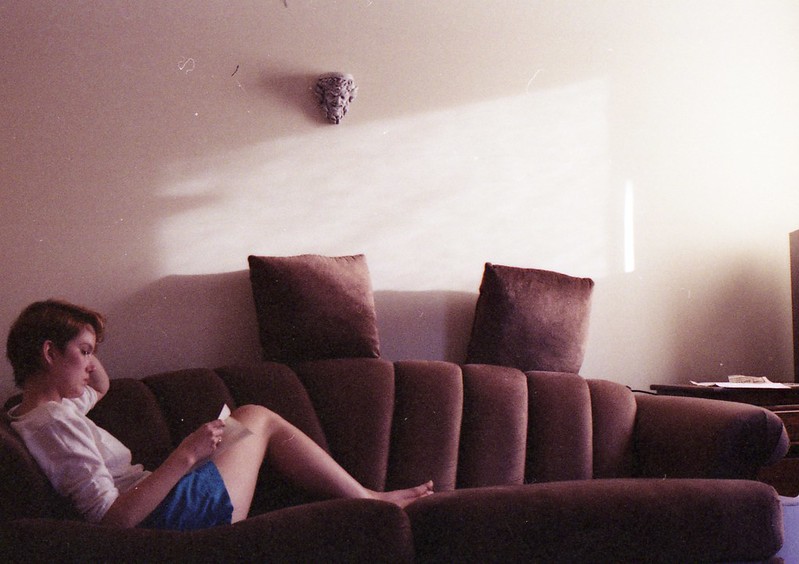Going Back, Part Four: The Daily Orange
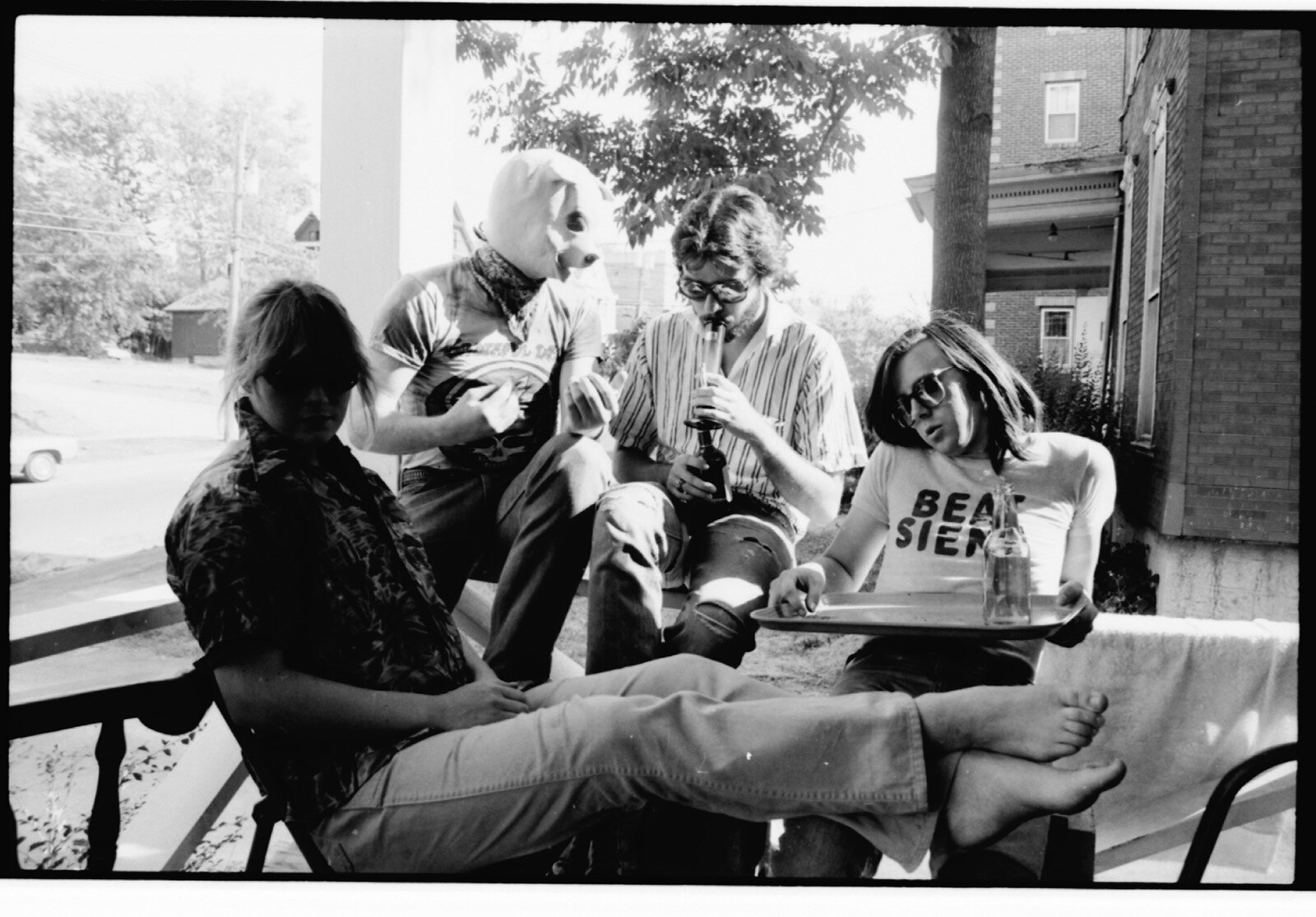
When we went back to Syracuse recently, we got to wander the halls of some of the buildings that had been huge parts of our lives as undergrads. Lee got to visit a sculpture in Crouse College that she has never stopped drawing. I got to wander into Newhouse I, the very building where, while in high school, my future was set. But what we couldn’t visit was the institution that defined my first two and a half years at SU – the old headquarters of The Daily Orange, at 1101 East Adams Street, was bulldozed long, long ago.
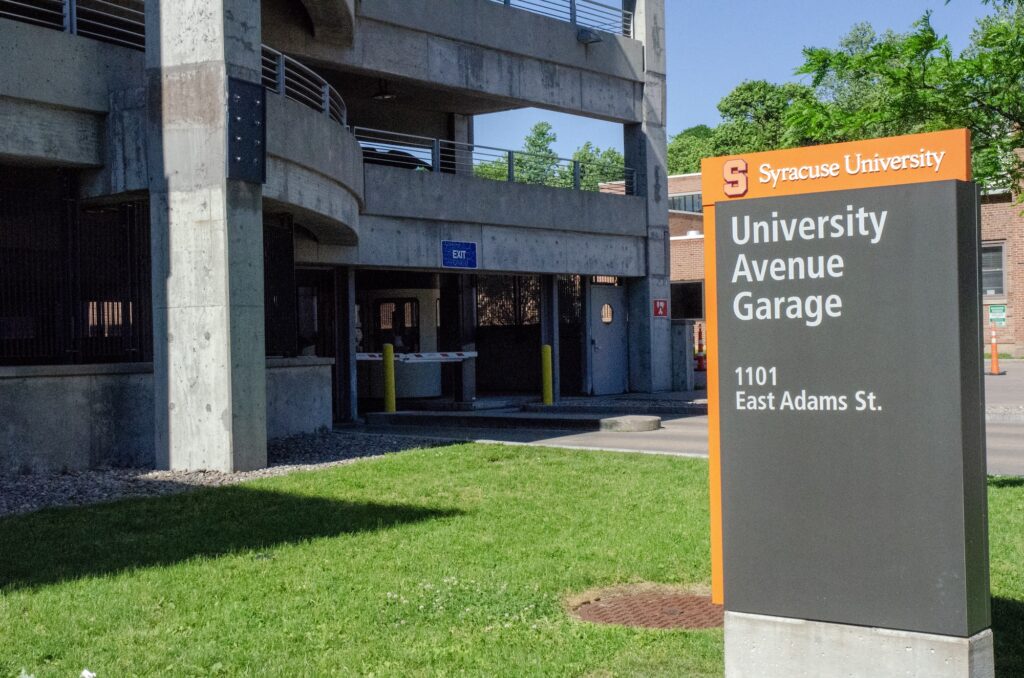
The Daily Orange was established in 1903, and functioned as a standard college newspaper in association with one of the country’s top journalism schools. But in 1971, it became a truly independent newspaper, partly funded through a student fee but free of university control. (At some point well after our era, it stopped taking even its dedicated fee, and now relies on advertising and donations.) As a training ground for journalists, at least those who chose the written word, it was without equal – I learned vastly more from working on that paper than I ever did from going to the journalism school.
I got an amazing advantage by arriving on campus before freshman year began (see Part One). I had taken to chatting with a woman whose name, tragically, I’ve forgotten. She was a sophomore or junior, an absolute delight, and when I told her I wanted to write on the newspaper, she said she knew people who worked on the DO and she’d introduce me when they got to campus. And she did! I don’t remember exactly when it happened, but before the official move-in, she introduced me to her friends Patti and Maria. Patti was the copy editor, asked if I could proofread, and told me to come down to the DO office. (I’m not using last names here, only because a posting I made in the earliest days of internetting inadvertently caused a former colleague some discomfort.)
I showed up at some appointed day and time, and was, of course, too early. For the first of hundreds of times, I climbed the echoey stairs of 1101 East Adams Street up to the second floor, where I found a lone reporter working in the newsroom who seemed to think I’d been lied to about when the copy editing staff showed up. I was welcome to stay. So I stayed. And eventually, Patti did show up, along with a couple of other copy editing staff.
The copy room had a traditional half-circle desk – the copy editor sat in the center hole, called “sitting slot,” and four or five of us sat around the outside of the table, called “sitting rim.” The editors sitting rim were known as “rim rats.” Rim rats would take stories that had been typed on foolscap and mark the copy up in pencil. By the time it got to the copy desk, it had already been reviewed by the appropriate section editors (news, Focus (lifestyle), sports, editorial), often marked up by them, sometimes with corrections pasted on with rubber cement. The rim rats gave it the semi-final proofread, check for adherence to Associated Press style, and check for clarity; then the copy editor who was sitting slot would review our work, and then the copy would be sent off to typesetting, which was done at a remote facility.
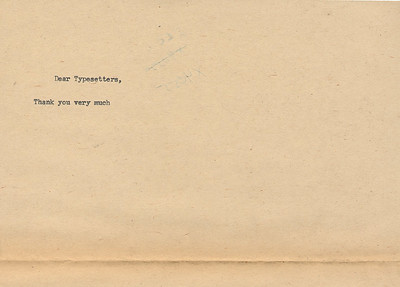
Patti gave me some sort of test edit, and I must have passed, because before I knew it I was hired as a copy editor – meaning I didn’t have to continue working food service for my work study grant.
I started immediately prioritizing the DO over academics. I didn’t go to freshman orientation, for example, because it conflicted with work at the DO, I already completely knew my way around campus, and another helpful rim rat showed me how to work the registration system (a complex business involving punchcards and lines in the gymnasium). In addition to copy editing, I learned enough layout to substitute for the layout director on occasion. I wrote some news articles. I started proofreading the typeset copy (which involved a trip to the printing plant in Fayetteville), which paid an extra $5, and doing pasteup, which paid $15. Theoretically, proofreaders were supposed to get home at a rational hour, while pasteup could go much later. In my years there, production kept getting later and later and later, and getting home at 3 or 4 in the morning wasn’t unusual, and there were some dawn returns – so it wasn’t great when I also had 8:30 classes. But I had priorities!
When I arrived, the paper was abuzz with production of a super special edition celebrating its 75th anniversary. That effort was being led by the mysterious (to me) Howard, who was off in the archives somewhere culling articles from the past. I heard Howard’s name so many times before I finally met him that I started to wonder if I was being pranked, to wonder whether there really was a Howard. But he did exist, and in those early days we were working furiously on copy he and others were producing for the 75th anniversary edition in addition to getting out the regular daily.
Twenty-five years later, it was stunning to me when we went back to campus to celebrate The DO’s 100th anniversary. That experience was the only college reunion I’ve ever attended, and the first time I started to feel like I’d been on the planet for quite a long time. I was honored that one of my articles was chosen for inclusion in a paperback edition commemorating that anniversary, but of course it was one I produced under an ill-advised pseudonym I’d carried over since high school for my “satirical” work, so no one will ever know it was my work. Now it’s even more stunning to think last year was The DO’s 120th anniversary.
The DO quickly became part of my identity – I spent huge amounts of time at that rickety old building on East Adams Street, with its absolutely random collection of ancient office furniture and mostly manual typewriters in various states of repair. The downstairs housed the sales and administrative offices – there were full-time, adult business and advertising managers – and the darkrooms, and an ancient little Pepsi machine that still dispensed glass bottles. Upstairs, you entered the news room, no doubt once a living room, that took up the full width of the building. (It even had a tiny second-story porch, rarely used. The university acquired it around 1947 and used it as women’s housing called Rogers Cottage.) From the newsroom, there was a hallway – on the left side, the copy room, the editor in chief’s office, and the editorial office. On the right side, the Focus office (lifestyles and entertainment), and then what we invariably called “sprots.” At the very end of the hallway was an ancient, filthy bathroom, complete with an unused old claw-foot tub into which someone had unceremoniously dumped a dusty-smelling old carpet that just sat in there forever.
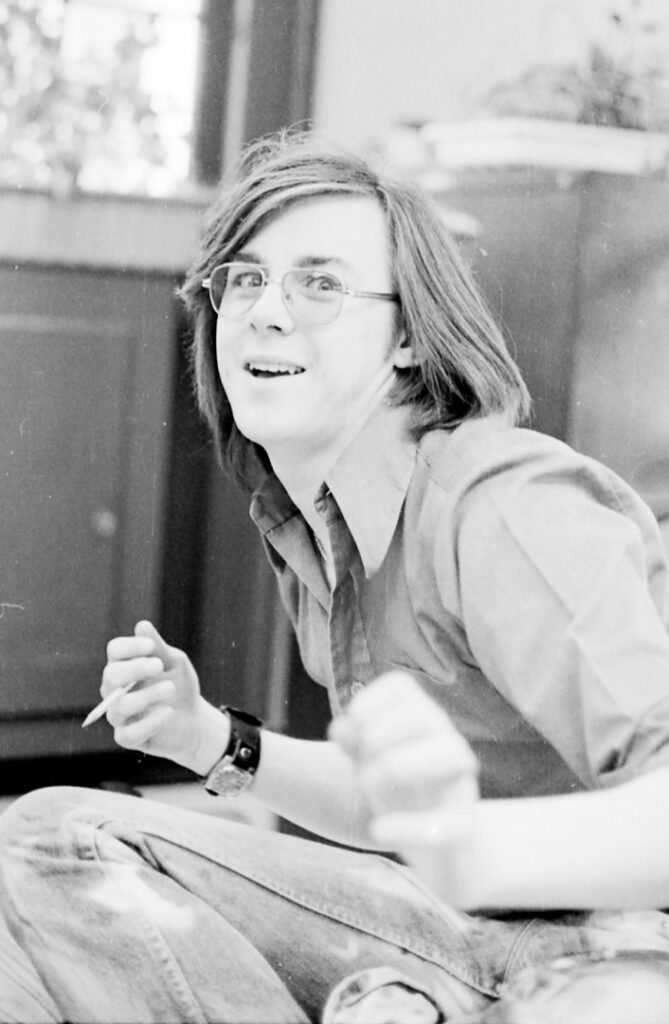
The Summer Orange
Freshman year came to an end, and with an assignment as “special projects editor” for the next year, essentially responsible for occasionally filling the back page and creating special reports, I was scheduled to go back home to Scotia, where I’d secured a summer position with a local one-man printing production shop doing really basic pasteup. But then I found out there was going to be a weekly summer edition of the paper – 12 weeks with a take-home of $70 a week – and so I found myself getting a post as news editor and staying in Syracuse for the summer. We were a skeleton crew of five, I think, plus some random writers who may have been around, and we were responsible for absolutely everything – writing, editing, layout, proofreading, paste-up, and delivering the papers. It was essentially a Monday-Wednesday job. We’d work overnight on Wednesday, deliver the paper all over campus on Thursday morning, and then we had most of four days free. It didn’t suck.
After a misstep in my first housing arrangement for the summer, renting a windowless room in the basement of a frat house that I quickly decided was absolutely not going to work, I found an absolutely lovely sublet with two grad students way out near Barry Park – a long walk from The DO in the flip-flops I favored that summer, a less long bike ride. The neighborhood was bright and green, and still is – when we were visiting, we stopped in at the Syracuse Real Food co-op, which I’m not sure I’d visited since the summer of ’79. That created a real rush of memory – both there and the Good Food Store that was in Watson Hall were my early excursions into health food, at a time when that mostly meant bulk goods and aggressively unflavorful foods. But I’ve spent a lifetime trying to find a granola as perfect as whatever it was they sold back then.
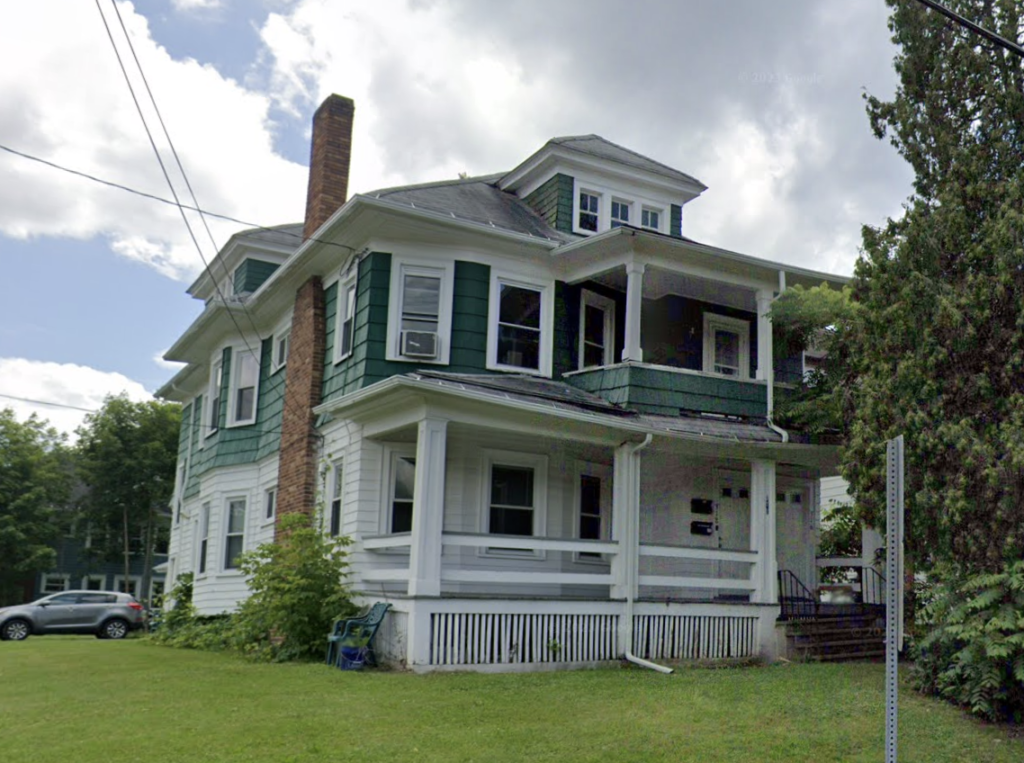
That first summer was a delight, working on the paper with a small team. The weeks went by quickly, and the weekends were often spent out listening to local bands like Next of Kin, who had a regular gig at a chain restaurant called The Ground Round. When our 12 week run was over, I had to find various jobs to make the rent for August, but somehow I got hooked up with several random pasteup jobs that got me through to the start of the year – leading me to believe that, whatever I did, if the bottom fell out, I could always go back to print production. Uh huh.
I kept on with the DO in my sophomore year. It’s weird that fundamental details of important parts of life can disappear over time – once my timeline of progression at the DO would have been absolutely locked in memory, but it’s not anymore. I know I was doing a lot of layout and somehow redesigned the paper, getting rid of the world’s worst flag (just the name set in Souvenir, for god’s sake) and spiffying up the nameplate and section heads, along with some other changes. Somewhen in there, one of the editorial page editors had to leave their post and I was offered the spot – which basically meant thinking up some important issue to pontificate about every day or two. It was fun, comparatively easy and I was still working lots of nights doing pasteup for the extra money.


To my DO colleagues, I would say, that was the first time I was on a team that was that talented, that committed, that supportive. I learned everything about writing and a lot about life. Some I’ve remained friends with in some form all these years, which is remarkable. Others, I’m sure, were glad to hear the last from me – I’m sure I could come across as cocky and abrasive, and I know I was gratingly sarcastic. Not to mention, a raging alcoholic before my time was over there.
Pig Book Summer
The next summer, I was co-senior editor of the Summer Orange. That was the summer I was destined to remember forever as “Pig Book Summer,” because several of my friends and I spent a chunk of the summer of 1980 producing the annual guide for incoming freshmen, which was unfortunately known as The Pig Book. Freshmen would send in their photos, which would be published with their names and hometowns, as a sort of guide to the freshman class. Allegedly helpful articles about Syracuse and campus life were included, along with some good-natured and some genuinely cruel pokes at some of the submitted photographs. I don’t feel good about any of it at this remove, but I feel the need to say that not only was it sponsored and paid for by Student Association, but people who were not us reviewed it and okayed its publication.
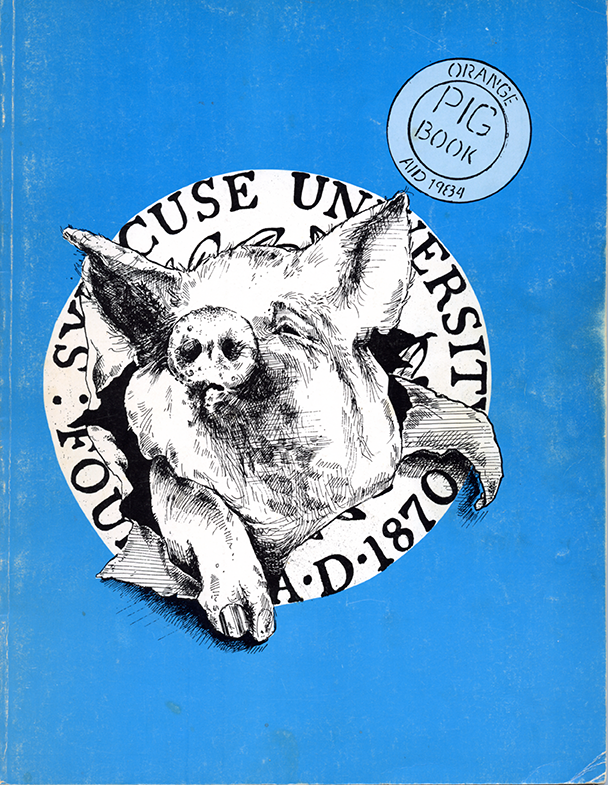
There was a real “do anything” contingent at the DO, and that “anything” included all the drugs that were popular in the ’70s. In retrospect, I didn’t necessarily need to see people I liked and respected using drugs and somehow not ruining their lives. I had been largely anti-drug (other than alcohol) to that point. It wasn’t that I joined in to be cool, but that all these people whom I thought were cool were also dipping into drugs, making it okay if I wanted to. At first, I vehemently didn’t, for a host of reasons including my hatred of smoking and the idea of putting toxins in my lungs (good instinct for an asthmatic who would suffer a serious bout of pneumonia). But, it became easy to partake, easier than not to, and over time my recalcitrance gave way to my genetic addiction because of course it did. Make no mistake, alcohol was always my top five problems, but I did throw a little more gasoline on the fire because why the fuck not – I was on fire, I might as well burn.
And that’s what happened that Pig Book summer. All that kindling of self-destruction I had been carefully piling up underneath myself took fire in a splendid blaze of minimal responsibility, casually debauched friends, and the power of a 19-year-old body to plow through just about anything. Gathering on the porch of a friend’s apartment each and every sultry summer night, a case or two of Rolling Rock at the ready, we would begin with a nightly ritual of playing National Lampoon’s “Goodbye Pop” – at the time, in our view, the funniest thing ever committed to record. We would move on, largely through music by The Grateful Dead and The Allman Brothers that I couldn’t stand then – but these were my friends – and still can’t stand today. We’d drink and get high and keep the music playing out on the porch (fortunately, minimal neighbors) until 2 am, 3 am, dawn – and then I’d crawl across the street to my apartment, sleep a few minutes, and then proceed with the next day. Lather, rinse, repeat.
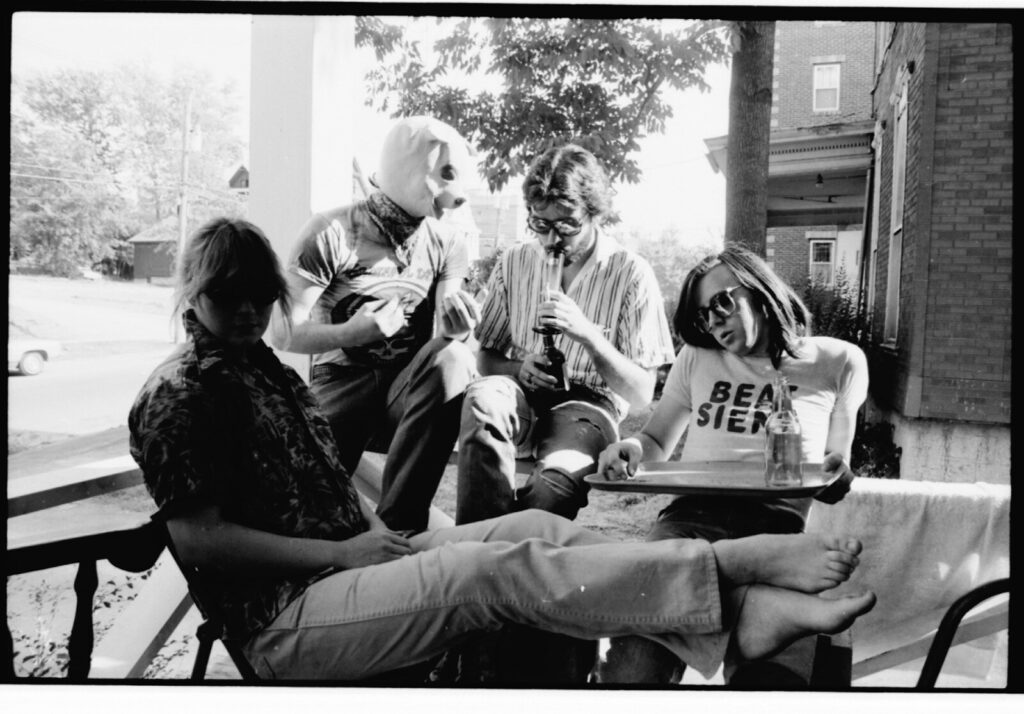
That all led into a fall semester of my junior year where I was becoming absolutely certain I had made a dreadful mistake, that this thing that I was best at – newspaper writing – was simply not what I wanted to do as a career. I was no longer convinced I was going to have any kind of an exceptional career, or that I was in any way exceptional. Was I going to move from town to town, asking people how they felt about seeing their loved ones die or seeing their cat stuck up a tree, or whatever life event had thrust them into the news? Was I going to go to one late night city council meeting after another, writing criticism of how things were done, that would make no difference whatsoever? At the time, I think most of us studying newspaper journalism had dreams of being Bob Woodward, but it eventually became clear we were far more likely to toil away for 40 years on the Auburn Citizen-Advertiser, if we were lucky enough. That’s all fine, if you want it. I didn’t want it.
So I went into full existential crisis. (Know what doesn’t help with an existential crisis? Alcohol and drugs.) I looked at my other options – like switching majors, perhaps to photography, which I loved and had a minor talent for. But anything like that would require more time, and switching schools (even within SU) would cost me my scholarship, without which none of this was possible. So, I muddled through an awful semester. Then Ronald Reagan hit, my federal aid disappeared, and I was fucked.
So, I hit the wall and had to leave school and work full-time. As it turned out, it was only for a semester – but no longer being a student, I could no longer work at The DO, so that huge part of my life and my identity came to a very sudden end.
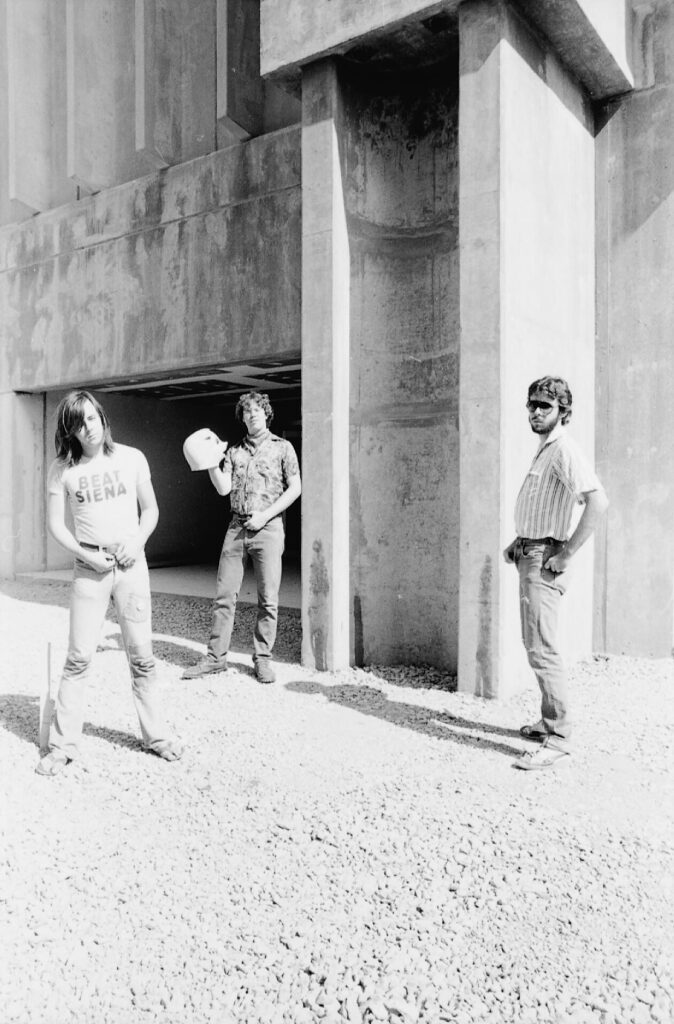
Going back so many years later, it’s incredible how fresh some of this remains to me. Even though every aspect of the physical landscape of the blocks where all this happened has changed (except the apartment building I lived in after Seneca, which we’ll get to next), I still had a visceral reaction, a strong sense memory of those summer nights. I used to look on it regretfully, to rue the debauchery and the direction I took myself in during Pig Book Summer. Now, that’s pointless, and I can remember that there was a lot about it that was fun and even valuable. As crazed as it was, we were still teams of really dedicated kids putting out quality publications. We were passionate, and so sure we were going to change the world. There are worse things to do than spend a summer hanging out with your friends, all night every night. And “Goodbye Pop” is, in fact, still one of the funniest records ever made (though you may have to be of my generation for the references to work).
I get an actual warm feeling looking at the empty spaces where we lived and played, long gone though they are. I get a bit of a gut punch looking at that apartment building that still stands, where I lived in my junior year – not because of anything in particular that happened there, but because of how lost I was that year.
And when I looked at where The DO had been – somehow, I was transformed into that 17-year-old, optimistic, beautiful kid who ran up those stairs for the first time, his whole life ahead of him, his whole life starting right there in that run-down old building.


